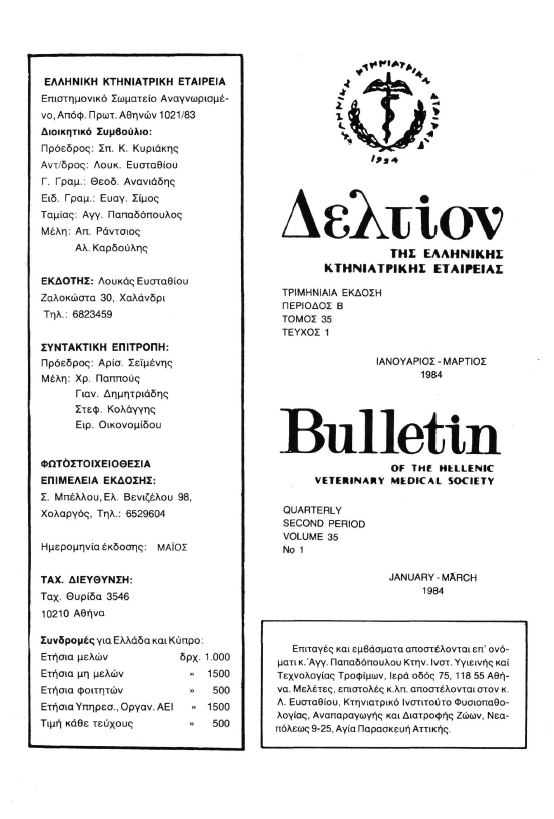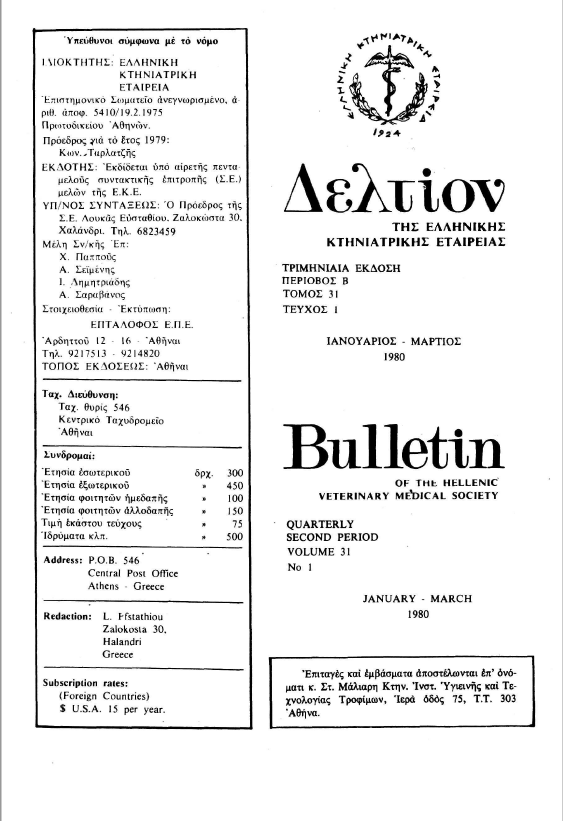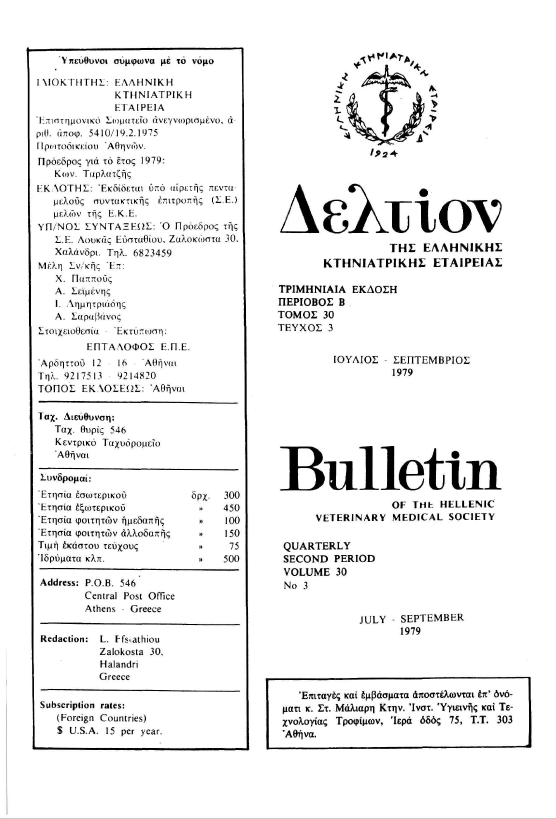Bacteriological tests of Drinkable Water
Abstract
Bacteriological tests were made in 1110 samples of drinkable water which came from recognizable municipal and parish networks of water supply, cisterns, tanks, drillings, sources, wells and slaughter-housew, tecnicalhouse technical-handicraft installations of Achia's countfy. The tests were made at the Veterinary Laboratory of Patras and they deal with: the measurment of the bottom bacillus index per 100cm3 and the number of the total microbic flora of the middle leafs in 1cm3, the enteric streprococcus in 50cm3, the research of the Esc. Coli in 1cm3 and the Salmonella- Sigella in 20cm3. From the samples, 476 (42%) were found with bottom bucillus index more than 2/ 100cm3 and so they are unsuitable. It was also found in 490 samples (44,2%) Esc. Coli, in 93 samples (8.4%) enteric streprococcus and one sample was with S. enteritidis (0.1%) which came from slaughter-houe technical installations. Finally it is reminded the sanitary application (frequent cleaning, systematic chlorination e.t.c) to all supply and storage space carriers of drinkable water and specially to wells which have increase bottom bacillus index in 42.9% from the total number of the measured samples.
Article Details
- How to Cite
-
Αρταβάνης Σ., Τσουτσάνης Κ., & Θεοδοσοπούλου - Τσομπανίδου Γ. (2019). Bacteriological tests of Drinkable Water. Journal of the Hellenic Veterinary Medical Society, 35(1), 3–11. https://doi.org/10.12681/jhvms.21613
- Issue
- Vol. 35 No. 1 (1984)
- Section
- Articles

This work is licensed under a Creative Commons Attribution-NonCommercial 4.0 International License.
Authors who publish with this journal agree to the following terms:
· Authors retain copyright and grant the journal right of first publication with the work simultaneously licensed under a Creative Commons Attribution Non-Commercial License that allows others to share the work with an acknowledgement of the work's authorship and initial publication in this journal.
· Authors are able to enter into separate, additional contractual arrangements for the non-exclusive distribution of the journal's published version of the work (e.g. post it to an institutional repository or publish it in a book), with an acknowledgement of its initial publication in this journal.
· Authors are permitted and encouraged to post their work online (preferably in institutional repositories or on their website) prior to and during the submission process, as it can lead to productive exchanges, as well as earlier and greater citation of published work.





